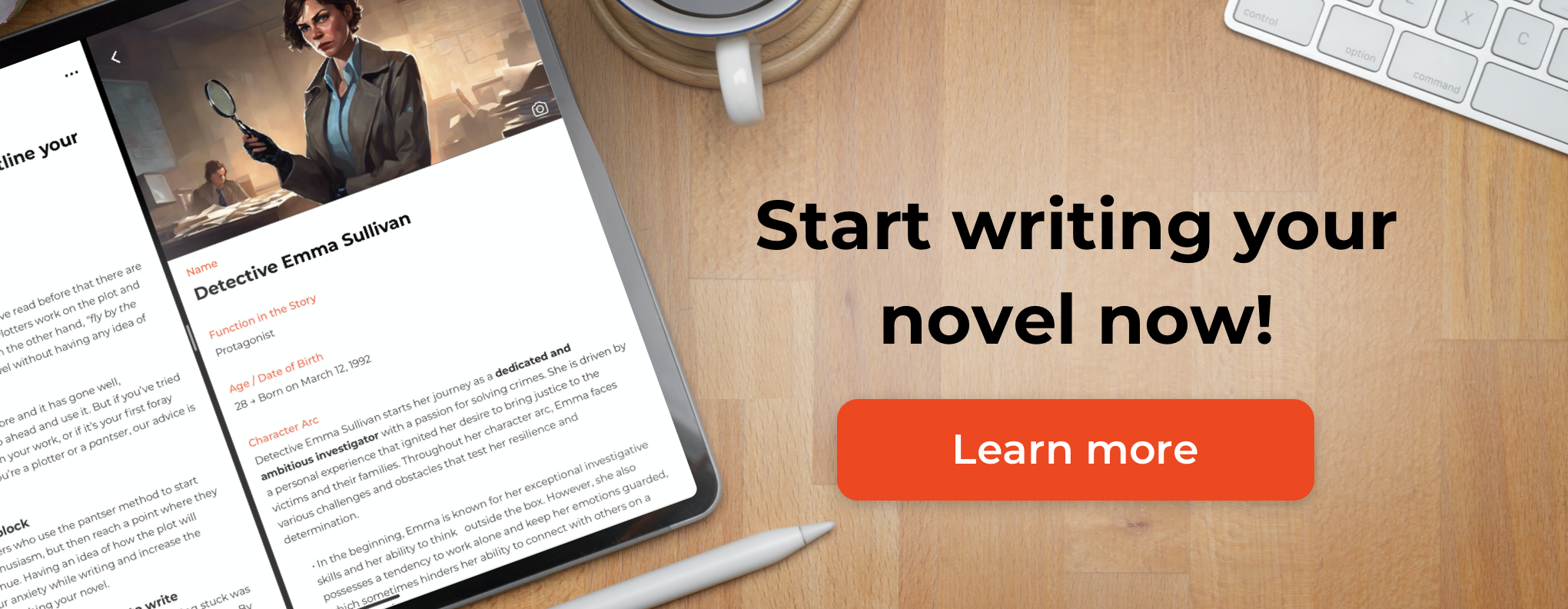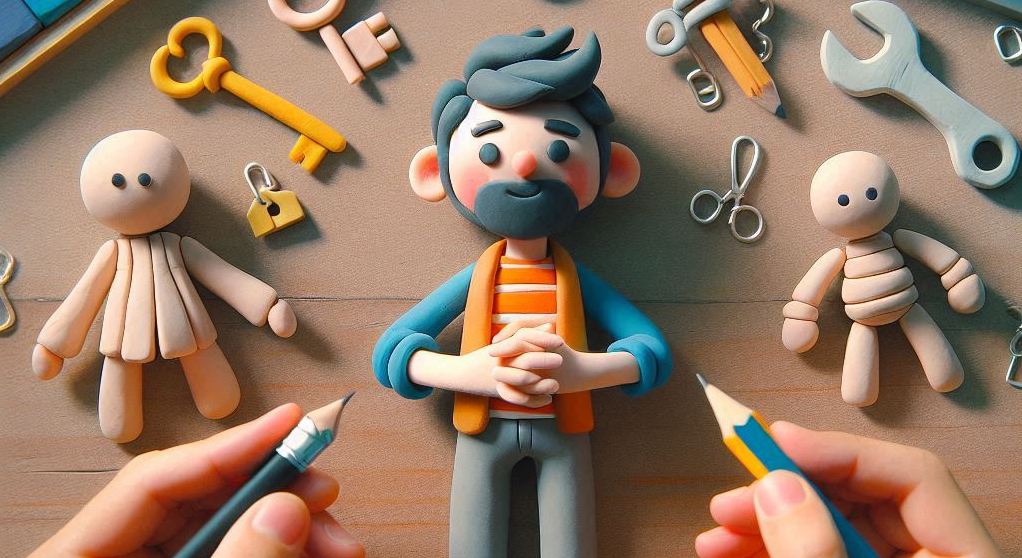When writing a story, we all want our cast to be compelling, interesting, and rounded. We aim for readers to love our characters or, at least, find them fascinating enough to keep reading.
A round character is one that has depth, dynamism and credibility. While characters are always a representation and not real people, round characters are closer to reality than flat characters. But how can we create well-rounded characters? Is there a secret to captivating our audience with our cast?
First of all, you should start creating a character profile to define who your characters are and where you want to take them in the story. A strong character arc will make them more dynamic and allow you to match the journey the character takes with the theme of the story.
But there is something else. There are three key elements that help us to give a new dimension to our characters: Their flaws, their disadvantages, and their particularities.
🎯 Pro Tip: For me, a good organization of the character profiles is crucial when plotting a novel. Try Story Planner to create your character profiles and link them to the scenes of your story.
Character’s Flaws
A flaw is something that goes wrong with the character. Something that perhaps they should have already fixed, but they haven’t. It could be a personality trait, a misbelief or any other failing that affects the plot to a greater or lesser extent. Depending on how it affects the plot, it will be considered a minor, a major or a fatal fail.
1. Minor Flaws
Minor flaws are small quirks that add depth to the character and help us create tension, funny moments, sub conflicts… But some annoying minor flaws can also be major strengths, depending on the context: Let’s imagine a character who is obsessed with absorbing as much information as possible from the books she finds. This bothers her friends a lot. Some readers may find this issue annoying too. But at some point in the story, when the characters find themselves at a crossroads, the knowledge that they have acquired can save them from danger.
2. Major Flaws
Major flaws have a greater influence on the story, affecting the surrounding cast in a deeper way. An example for this could be the pride of a character who, by not acknowledging a mistake and apologizing, gets all the characters in trouble and drives the plot forward. This is what happens in the Back to the Future movies, where the protagonist, Marty McFly, has a major flaw: He can’t stand anyone calling him “Chicken.” When someone insults him with that word, Marty overreacts to prove that he is not a coward, which usually results in trouble.
3. Fatal Flaws
And here we are. Fatal flaws. The decisive ones. The defects that keep our characters from achieving their goal. The most intense of the character’s failures. Flaws that convey the theme of the story to teach the characters and readers something, and to allow the writers to make their point.
For a fatal flaw to be interesting, it must conflict directly with the character’s goal. In the course of the story, they will have to overcome this flaw, or it will be their downfall. And voilà: Now we have a great clue on how to create a character arc!
But let’s see an example: We have this young soccer player. She is incredibly talented. She has managed to get the team to the final for the first time in history. This is a unique opportunity. If they win, the team will move up the ranks.
But the character has a weakness, a flaw: she is too self-centered and incapable of playing as a team. This is a real problem because their opponents in the final are the best team they have ever faced. Although she is training hard and doing her best, unless she learns how to play as a team, they will never win.
🎯 Pro Tips: 1. If you want there to be a change in your characters, hit them where it hurts most: Their flaws. If the character has to make a difficult decision, make them unable to make it at first and show the consequences.2. And if you want to make the story even more interesting, relate their flaws to one of the story themes.
Character’s Disadvantages
A disadvantage is a handicap that the character has although it is not their fault, nor is it in their power to eliminate it. It may be an obstacle on their way to the goal, indeed. But the character does not have to overcome their disadvantage but reach their goal despite it.
Imagine a character who is blind and is determined to find his sister’s murderer. Despite witnessing the murder, his blindness makes it difficult for him to identify the culprit. However, he will achieve his goal, making him even more impressive in the reader’s eyes.


Character’s Particularities
Particularities make your characters unique and more interesting. It can be a small detail, an obsession, or a hobby that helps better outline their personality.
🎯 Pro Tip: It will be much more interesting if you give your character a reason to have that quirk and you include it in the plot. You can relate it to their flaws, their disadvantages, the theme, the adhesion to the plot… No matter what, use it. It’s a fantastic tool to help your story grow.
Perhaps a main character in a post-apocalyptic story is so addicted to coffee that at a specific moment in the plot they will be able to accept something that seemed impossible in exchange for a good cup of coffee.
Maybe the character collects Paris souvenirs that they buy on eBay because they have always dreamed of traveling to that city, but they have never been able to. They haven’t even had the opportunity to leave the state. So when the possibility arises for them to travel to France for a job that in other circumstances they would not accept, we will not be so surprised if they accept it.
🎓 Learn more: How Create the Perfect Character Profile Template
Of course, these three elements are just a part of creating a character. There are other relevant aspects, such as their strengths, or their inner conflict. It is also important to know how to describe a character in a story, or how to get the reader to like the characters. But thoughtfully considering the flaws, disadvantages, and particularities of our characters will undoubtedly help us create better and well-rounded characters.
